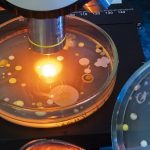Présentation
RÉSUMÉ
Cet article décrit la préparation et les applications de nouvelles structures hybrides, composées de protéines variées (enzymes, anticorps...) et d'ADN de différentes tailles (oligonucléotide, petit ADN double brin, ADN géant). Il est montré en particulier comment, en combinant les propriétés biologiques et physico-chimiques de ces biopolymères essentiels à la vie, il est possible d'obtenir des nanostructures aux propriétés inédites, permettant des applications innovantes dans de nombreux domaines scientifiques qui vont de la biochimie aux nanotechnologies.
Lire cet article issu d'une ressource documentaire complète, actualisée et validée par des comités scientifiques.
Lire l’articleABSTRACT
Auteur(s)
-
Anna VENANCIO-MARQUES : Doctorante au département de chimie de l'École normale supérieure de Paris, UMR 8640
-
Sergii RUDIUK : Docteur, chargé de recherche CNRS au département de chimie de l'École normale supérieure de Paris, UMR 8640
-
Damien BAIGL : Professeur à l'université de Pierre et Marie Curie Paris 6, département de chimie de l'École normale supérieure de Paris, UMR 8640
INTRODUCTION
Cet article décrit la préparation et les applications de nouvelles structures hybrides, composées de protéines variées (enzymes, anticorps, etc.) et d'ADN de différentes tailles (oligonucléotide, petit ADN double brin, ADN géant). Nous montrons en particulier comment, en combinant les propriétés biologiques et physico-chimiques de ces biopolymères essentiels à la vie, il est possible d'obtenir des nanostructures aux propriétés inédites, permettant des applications innovantes dans de nombreux domaines scientifiques qui vont de la biochimie aux nanotechnologies.
In this article, we review the preparation and the wide range of applications of new hybrid structures, which combine various proteins (enzymes, antibodies, etc...) with DNA of different lengths (oligonucleotides, small double stranded DNAs, giant DNAs). We show how bringing together the biological and physico-chemical properties of these two biologically essential polymers in a single entity leads to nanostructures with novel features, therefore paving the way for groundbreaking applications in scientific fields ranging from biochemistry to nanotechnology.
Bioconjugaison, AFM, microscopie de fluorescence, nanotechnologie, biotechnologie, combinaison de propriétés spécifiques ADN et protéine
Bioconjugation, AFM, fluorescence microscopy, nanotechnology, biotechnology, combining DNA and protein properties
Domaine : biotechnologie et nanotechnologie
Degré de diffusion de la technologie : Émergence | Croissance | Maturité
Technologies impliquées : purification de protéines, bioconjugaison, AFM, microscopie de fluorescence, cinétique enzymatique, métallisation, PCR
Domaines d'application : procédés biochimiques, bioanalyse, santé, nanoélectronique
Principaux acteurs français : ENS, UPMC, CNRS
Pôles de compétitivité :
Centres de compétence :
Industriels :
Autres acteurs dans le monde : Christof M. Niemeyer (Karlsruhe Institute of Technologie, Allemagne)
Contact : http://www.baigllab.com
DOI (Digital Object Identifier)
CET ARTICLE SE TROUVE ÉGALEMENT DANS :
Accueil > Ressources documentaires > Innovation > Nanosciences et nanotechnologies > Nanomatériaux : synthèse et élaboration > Structures hybrides ADN-protéines : synthèse et applications
Accueil > Ressources documentaires > Sciences fondamentales > Nanosciences et nanotechnologies > Nanomatériaux : synthèse et élaboration > Structures hybrides ADN-protéines : synthèse et applications
Accueil > Ressources documentaires > Procédés chimie - bio - agro > Bioprocédés et bioproductions > Biotech industrielles pour la chimie et l’énergie > Structures hybrides ADN-protéines : synthèse et applications
Cet article fait partie de l’offre
Éco-conception et innovation responsable
(139 articles en ce moment)
Cette offre vous donne accès à :
Une base complète d’articles
Actualisée et enrichie d’articles validés par nos comités scientifiques
Des services
Un ensemble d'outils exclusifs en complément des ressources
Un Parcours Pratique
Opérationnel et didactique, pour garantir l'acquisition des compétences transverses
Doc & Quiz
Des articles interactifs avec des quiz, pour une lecture constructive
Présentation
Cet article fait partie de l’offre
Éco-conception et innovation responsable
(139 articles en ce moment)
Cette offre vous donne accès à :
Une base complète d’articles
Actualisée et enrichie d’articles validés par nos comités scientifiques
Des services
Un ensemble d'outils exclusifs en complément des ressources
Un Parcours Pratique
Opérationnel et didactique, pour garantir l'acquisition des compétences transverses
Doc & Quiz
Des articles interactifs avec des quiz, pour une lecture constructive
BIBLIOGRAPHIE
-
(1) - NIEMEYER (C.M.) - Semisynthetic DNA-protein conjugates for biosensing and nanofabrication. - Angew. Chem. Int. Ed., 49, no 7, p. 1200-1216 (2010).
-
(2) - HERMANSON (G.T.) - Bioconjugate Techniques - (2008).
-
(3) - BANO (F.), FRUK (L.), SANAVIO (B.), GLETTENBERG (M.), CASALIS (L.), NIEMEYER (C.M.), SCOLES (G.) - Toward multiprotein nanoarrays using nanografting and DNA directed immobilization of proteins. - Nano letters, 9, no 7, p. 2614-2618 (2009).
-
(4) - WINSSINGER (N.), HARRIS (J.L.), BACKES (B.J.), SCHULTZ (P.G.) - From split-pool libraries to spatially addressable microarrays and its application to functional proteomic profiling. - Angew. Chem. Int. Ed., 40, no 17, p. 3152-3155 (2001).
-
(5) - COREY (D.R.), SCHULTZ (P.G.) - Generation of a hybrid sequence-specific single-stranded deoxyribonuclease. - Science, 238, no 4 832, p. 1401-1403 (déc. 1987).
-
...
DANS NOS BASES DOCUMENTAIRES
ANNEXES
Conjugué protéine-ADN petit/géant
Site de l'équipe de BAIGL (D.) (École Normale Supérieure, Paris, France) http://www.baigllab.com/
Nanotechnologie ADN
Site de l'équipe de SEEMAN (N.C.) (New York University, NY, États-Unis) http://www.seemanlab4.chem.nyu.edu
Nanostructure biomoléculaire
Site de l'équipe de NIEMEYER (C.M.) (Karlsruhe Institute of Technologie, Allemagne) http://www.ibg.kit.edu/ibg1/193.php
Chimie biomoléculaire
Site de l'équipe de CARELL (T.) (Ludwig MaximiliansUniversität, Munich, Allemagne) http://www.cup.uni-muenchen.de/oc/carell/
Synthèse et propriétés d'assemblages moléculaires
Site de l'équipe de SCHULTZ (P.G.) (The Scripps Research Institute, San Diego, CA, États-Unis) http://www.schultz.scripps.edu/
HAUT DE PAGECet article fait partie de l’offre
Éco-conception et innovation responsable
(139 articles en ce moment)
Cette offre vous donne accès à :
Une base complète d’articles
Actualisée et enrichie d’articles validés par nos comités scientifiques
Des services
Un ensemble d'outils exclusifs en complément des ressources
Un Parcours Pratique
Opérationnel et didactique, pour garantir l'acquisition des compétences transverses
Doc & Quiz
Des articles interactifs avec des quiz, pour une lecture constructive











